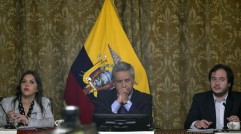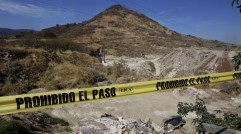NASA Considers Commercial Plans for Space Station
The International Space Station may be going commercial.
That, at least, is one idea being floated by officials at the National Aeronautics and Space Administration, as they seek out new funding streams and uses for the orbiting space laboratory.
NASA is apparently calling on companies interested in using the space station and its low-Earth orbit environment in innovative ways that will develop a strong commercial market and also assist the agency in reaching its exploration goals.
While the United States' growing commercial space industry has already been able to identify and develop self-sustaining economic opportunities in low-Earth orbit, NASA has worked to encourage and enable those projects through its own efforts to remove barriers to a commercially-driven market, an agency news release said.
NASA announced Jan. 9 it wants to extend the country's commitment to the International Space Station to at least 2024.
Since November 2000, the space station has maintained crew members continuously and has welcomed over 200 people and an array of international and commercial spacecraft.
"Now is an exciting time for space research and developing exploration capabilities," said William Gerstenmaier, NASA's associate administrator for human exploration and operations. "After 10 years of continuous habitation in low-Earth orbit, we know microgravity provides data unattainable on Earth. We are already seeing benefits in pharmaceuticals, medical robotics and materials sciences. This RFI will help identify how to open this one-of-a-kind orbital laboratory to the private sector in better and more practical ways -- ultimately, helping to pave the way for private microgravity research facilities of the future."
Companies interested in working with NASA have been directed to reply to the agency's "Request for Information" with detailed ideas about how it envisions:
- creating a private system in low-Earth orbit;
- developing crew transportation to enable commercial activities aboard the station beyond NASA requirements;
- breaking down access-related, programmatic and business-oriented barriers to those specific goals;
- addressing NASA capabilities or expertise that would help facilitate transitioning to a more commercially-driven presence; and
- identifying capabilities and resources that NASA could purchase from the commercial sector in order to allow the agency's research activities to continue after the life of the space station.
Company responses should be no more than 20 pages, are due by June 30 and may also include recommendations for how private research and other activities could be conducted on the space station in a way that encourages the station's future commercial value, as well as demand for low-Earth orbit access.
The complete RFI issued by NASA is available at: https://go.nasa.gov/1lot8fm
Subscribe to Latin Post!
Sign up for our free newsletter for the Latest coverage!














